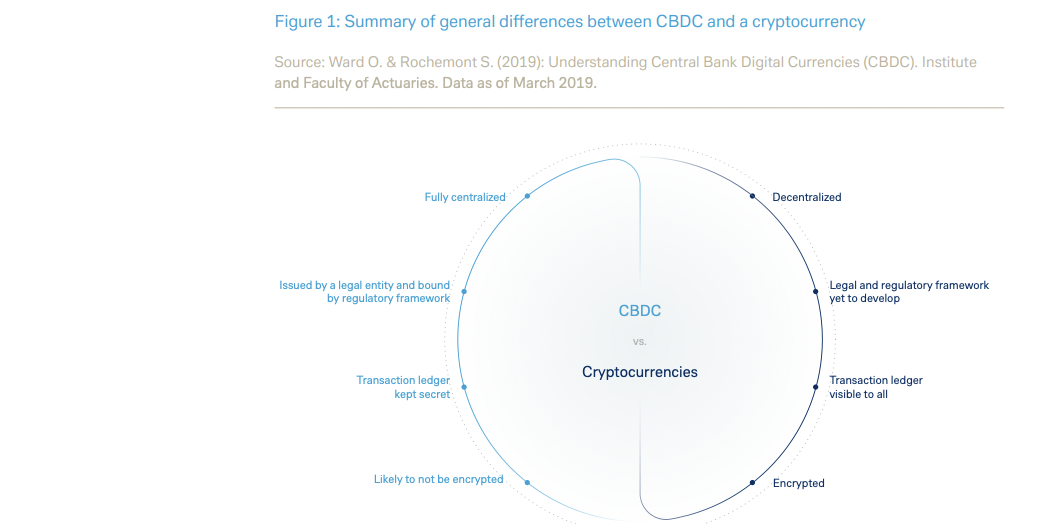
- Cryptocurrencies will survive, but their use may be limited by central bank digital currencies, Deutsche Bank said.
- The report says cryptocurrencies will become stronger and more usable in everyday life the longer they exist.
- Once CBDCs are commonplace, their advantages could outweigh those of cryptocurrencies, the report said.
- Sign up here for our daily newsletter, 10 Things Before the Opening Bell.
Cryptocurrencies aren't going anywhere in the coming years, but their usage will probably decline when central bank digital currencies (CBDCs) are eventually rolled out, according to Deutsche Bank International Private Bank.
Currently, cryptocurrencies like bitcoin are not a mainstream asset class, but it will become more robust over time, Christian Nolting, Deutsche Bank's global chief investment officer, wrote in an introduction to a special report.
"The longer cryptocurrencies survive, the more robust and credible they become due to network effects (Metcalfe's law). Once we see some stability in terms of price fluctuations, the use of cryptocurrencies for the exchange of goods and services goods could increase," the report said.
Whether this will become reality depends on the rollout of CBDCs and factors such as regulation, environmental impact, security issues and transaction speed, Deutsche Bank said.
Whilst most major central banks are examining the possibility of launching their own digital currencies, China and Sweden are two of the few who have started trials. The US Federal Reserve and the European Central Bank are yet to decide whether to launch their own digital coins.
Deutsche Bank argues the longer central banks take to deploy their own digital currencies, the more scope existing cryptocurrencies will have to establish themselves. As most CBDCs are still at the very early stages of development, this could be a long time coming, but will have a significant impact when their use does become mainstream.
"A widespread introduction of CBDCs accompanied by higher regulation of cryptocurrencies could create a more challenging environment for crypto assets as some (but not all) of their advantages compared to traditional financial assets would fade in the longer term," the report concludes.
Key differences between cryptocurrencies and CBDCs include the levels of centralization, regulation, oversight, encryption and transparency, Deutsche Bank said.

Deutsche Bank International Private Bank
"My belief is that governments and more digitally-aware populations may ultimately prefer to go with CBDC, at least for general use, at the possible expense of some cryptocurrencies," Nolting said in the report. "If this happens, then the more successful cryptocurrencies are likely to become increasingly differentiated in terms of business models and utility," he continued, highlighting a potential future path for crypto investments.
The report also urged caution against treating cryptocurrencies as an equivalent to gold in terms of diversification and risk management. Deutsche Bank said the high volatility and low liquidity of cryptocurrencies were key concerns.
Despite this, the incorporation of crypto assets into existing investment vehicles like ETFs may attract more retail and institutional funds into the sector as it makes investments easier, the bank said.